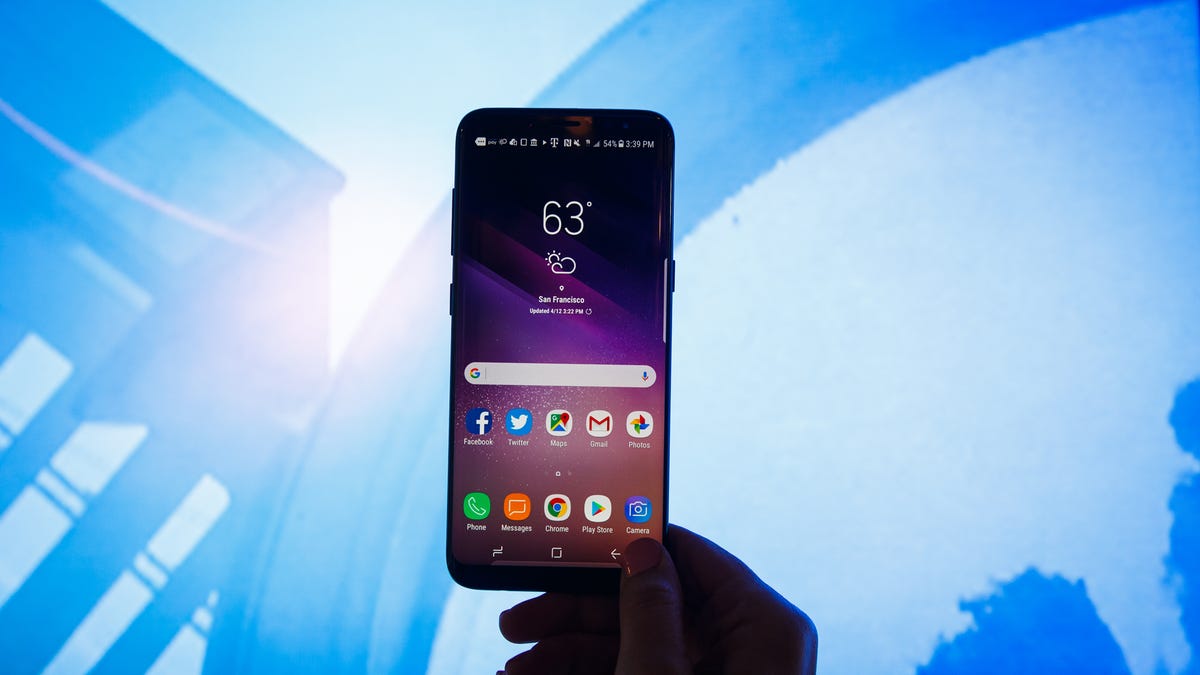Very early Galaxy S9 rumor: No iPhone X-style Face ID
This one goes heavy on the speculation.

Samsung fans who have been jealously, or at least curiously, eyeing the iPhone X's Face ID unlock feature maybe shouldn't pin their dreams on the Galaxy S9 getting 3D facial mapping, too.
This comes from a report in Business Korea, citing sources inside and outside the company.
The Galaxy S8 , S8 Plus and Note 8 already have the face unlock functionality, using a facial recognition system that isn't secure enough to work with mobile payments. It serves as an alternative unlock method to a password, pin, pattern, fingerprint reader and iris unlocking. Those last two, by the way, are secure enough to work with Samsung Pay and Google Pay.
Face ID on the iPhone X works by making a 3D map of you mug.
Apple's Face ID for the iPhone X, however, casts a wide net of 30,000 invisible infrared dots across your face each time it senses your shining visage, or more specifically, your eyes, nose and mouth. This creates a 3D depth map that validates you're you. Samsung's Galaxy phones -- and now the OnePlus 5T -- use no such 3D depth mapping; they're considered 2D.
Face ID represents the first time that a phone has ever used this kind of technology before. While some iPhone fans bristle at Apple stripping the fingerprint reader (and the entire signature home button along with it) to force them into its face unlock experiment, Face ID still represents cutting-edge innovation that phonemakers will rush to emulate.
Samsung declined to comment on the rumors, and it's too soon to say if the South Korean giant even has time to implement a similar system. That may be something we see Samsung bringing on board its next Note (the Note 9?) to further differentiate it from the Galaxy S line.
Again, this is strictly Rumorsville for now. As are these other tidbits.
Galaxy S9 rumors
- The Galaxy S9 could keep its 5.8-inch display, with the S9 Plus coming in at 6.2 inches (same as S8 and S8 Plus).
- Galaxy S9 phones should keep its dual camera setup on the back, but might not have a previously rumored dual camera array on the front.
- Those rear cameras may have a "'3-stack layer' image sensor" that can shoot over 1,000 images per second.
- They'll be more expensive because of those pricier camera components.
- They're expected to run on Qualcomm's Snapdragon 845 chipset (rumored) and Samsung's Exynos 9810 (announced).
- Samsung could launch the Galaxy S9 and S9 Plus in February at the annual
Mobile World Congress
show.
- Samsung's Exinos 9810 Chip and Qualcomm's Snapdragon 845 Chip and Samsung's artificial intelligence chip for voice recognition and neural language processing.

